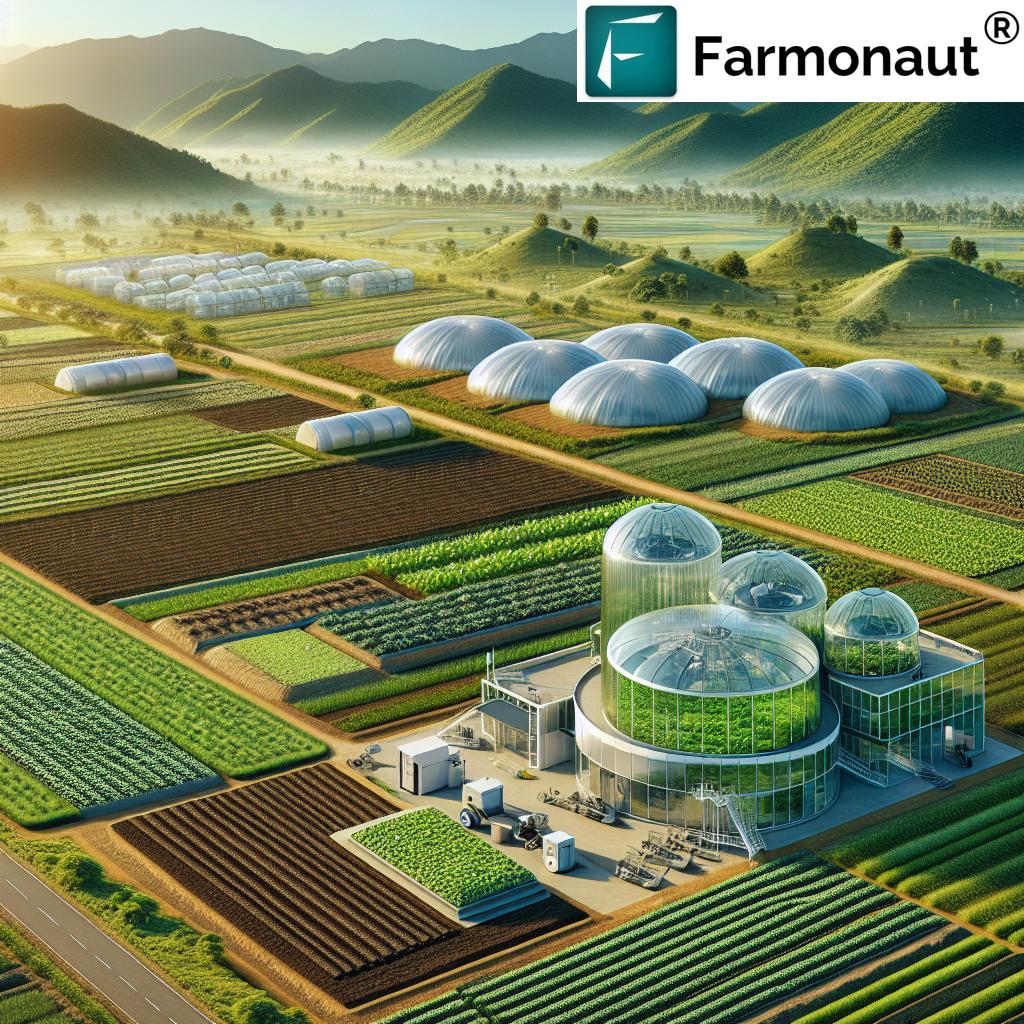Automation in Horticulture Labor Reduction in India: Transforming Agricultural Production and Labor Dynamics
Focus Keyword: automation in horticulture labor reduction
In the past few decades, India’s agricultural sector—especially horticulture—has witnessed tremendous transformation, marked by technological advancement and mounting market demand.
As the country approaches 2025, automation in horticulture labor reduction is set to revolutionize the agri horticulture system, bolstering agricultural production in India and addressing pressing labor challenges, rising costs, and sustainable farming practices.
This blog explores in detail how automation—involving robotics, AI, drones, sensor networks, and satellite monitoring—can transform Indian horticulture by reducing labor requirements, improving productivity, and driving the future of agricultural production.
“Automation in Indian horticulture has reduced labor costs by up to 30%, significantly improving farm profitability.”
The Evolving Agri Horticulture System in India
The agri horticulture system in India comprises a dynamic mix of fruits, vegetables, flowers, and ornamental plants, contributing substantially to both national output and farm incomes.
Particularly in recent years, focus has shifted towards maximizing production efficiency, value addition, and minimizing losses across the sector.
- India is one of the world’s largest producers of fruits and vegetables.
- Horticulture’s share of India’s agricultural output has steadily increased, strengthening farm livelihoods in both rural and peri-urban regions.
- However, horticulture remains a labor-intensive sector, facing acute labor shortages and rising wages.
To meet the dual goals of productivity and sustainability, automation emerges as a critical solution. The integration of advanced technologies not only enables India to address labor challenges but also modernize its farming systems.
Labor Dynamics: Challenges Faced by Indian Horticulture
The horticultural sector is deeply affected by labor shortages, which threaten sustainability and production capacity:
- Seasonal Dependency: Harvesting, planting, pruning, and post-harvest handling are traditionally manual activities requiring timely labor, often only available during specific seasons.
- Rising Costs: Growing wages and competition for labor due to urban migration put significant pressure on profitability.
- Aging Rural Workforce: Youth increasingly move to urban centers, causing an acute shortage of skilled farm workers.
- Product Quality Risks: Manual processes are prone to inconsistency and damage to crops.
These constraints limit productivity, increase operational costs, and may even threaten the long-term sustainability of horticultural operations.
Automation Technologies Revolutionizing Indian Horticulture
Automation in horticulture refers to the use of advanced technologies—including robotics, artificial intelligence (AI), machine learning, drones, precision machinery, and sensor networks—to perform tasks traditionally reliant on human labor.
Key Technologies & Their Roles:
- Automated Harvesting Robots: Computer-vision-driven robots capable of identifying, plucking, and sorting ripe fruits in orchards, reducing reliance on seasonal laborers and ensuring precision harvest.
- AI-Based Crop Monitoring: Combines satellite, drone, and sensor data for real-time crop health insights, enabling targeted interventions and resource optimization.
- Automated Pruning and Planting Machines: Robots efficiently perform pruning and seeding over large areas, reducing manual labor and time.
- Smart Drip Irrigation: IoT-enabled irrigation systems provide just-right water based on real-time soil moisture, supporting sustainable resource use.
- Drones for Aerial Surveillance: Drones map, scan, and detect diseases, pest outbreaks, and nutrient deficiencies, allowing farmers to act preemptively.
The convergence of these technologies underpins the automation in horticulture labor reduction movement, shaping the future of agricultural production in India.
“Over 40% of Indian horticulture farms have adopted advanced automation technologies for efficient and sustainable production.”
Comparative Impact Table: Key Automation Technologies in Indian Horticulture
To illustrate the measurable benefits, we compare the leading automation technologies’ impacts on labor cost reduction, yield increase, adoption rate, and sustainability.
| Technology | Estimated Labor Cost Reduction (%) | Estimated Yield Increase (%) | Adoption Rate in India (%) | Impact on Sustainability |
|---|---|---|---|---|
| Drip Irrigation | 25–35 | 30–40 | 60+ | High (Reduces water wastage, energy use) |
| Drones | 15–25 | 15–20 | 22 | Moderate–High (Precision application of inputs) |
| Automated Greenhouses | 30–40 | 20–35 | 9 | Very High (Climate control, resource optimization) |
| AI-based Crop Monitoring | 18–28 | 18–30 | 31 | High (Early detection, targeted interventions) |
*Data indicates estimates based on available studies and national reports on Indian horticulture in 2024.
Focus on Automation in Horticulture Labor Reduction
Reducing labor dependency while improving production efficiency is central to the adoption of automation in the horticultural sector.
Below are specific examples of how automation in horticulture labor reduction is achieved:
- Harvesting Robots:
- Use computer vision and AI to navigate orchard environments, identify ripe fruits, and pluck efficiently.
- Capable of performing harvesting tasks previously executed by humans, reducing the demand for seasonal laborers.
- Automated Planting and Pruning:
- Machines automate planting and pruning, saving time and reducing manual effort.
- Increased precision in the placement and maintenance of crops, minimizing human error and crop damage.
- Smart Irrigation:
- Automated drip irrigation systems controlled by IoT sensors, supplying water as needed to support sustainable agriculture.
- Reduces time spent on manual irrigation, freeing up workers for higher-value activities.
- Automated Sorting & Grading:
- Computer-vision based machines sort and grade produce post-harvest, reducing reliance on manual labor and improving quality.
Overall, automation in horticulture labor reduction allows Indian farmers to manage more land with fewer workers, cut operational costs, and maintain high standards in produce quality.
Precision Agriculture: Harnessing AI, Drones, and Data-Driven Management
Precision agriculture is the cornerstone of modern horticulture in India. By integrating automation with AI, drones, and sensor networks, farmers and businesses can radically enhance resource efficiency, productivity, and sustainability.
Benefits of Precision Agriculture:
- Real-time Crop Monitoring: Satellite and drone imagery, interpreted via machine learning, detects early signs of stress, pest infestations, or disease, and issues timely alerts.
- Farmonaut‘s satellite platform, for example, delivers NDVI-based vegetation health analysis and actionable advice.
- Efficient Input Application: Precision mapping allows optimal fertilizer, pesticide, and water use, minimizing waste and maximizing returns.
- Yield Prediction & Decision-making: AI-powered models suggest actions for higher yields.
- Labor Optimization: By automating routine tasks, skilled labor can focus on management, technology maintenance, and value-added activities.
Jeevn AI Advisory System, accessible from our Farmonaut suite, utilizes satellite and AI-driven analytics to empower Indian farmers with real-time weather forecasts, crop health, and tailored strategies for increasing productivity while reducing resource consumption. Discover more on the Large Scale Farm Management Platform.
Farmonaut Solutions Empowering Automation in Horticulture Labor Reduction
At Farmonaut, we understand the transformative power of satellite-driven automation in Indian horticulture.
By leveraging the latest in satellite imagery, AI, blockchain, and machine learning, we:
- Deliver Real-Time Satellite Monitoring:
- Our satellite monitoring system is accessible via Android, iOS, web apps, and easy-to-integrate APIs. This allows seamless resource management and operational efficiency for various users—from smallholder farmers to agri-businesses across India.
- Monitor vegetation health, soil moisture, crop stress, and more.
-
Access NDVI, SAVI, NDWI, LAI layers for advanced decision-making.
See Farmonaut’s API here.
- AI-Based Advisory (Jeevn):
- Provides strategic recommendations—from irrigation timing to harvest alerts—for improving yields, reducing labor, and ensuring disease-free crops.
- Blockchain-Based Traceability:
- Our blockchain powers traceability, securing the entire supply chain—from farm to market—improving transparency and consumer trust.
-
Trace every batch of produce with ease, vastly reducing fraud risk.
Explore the Traceability Platform.
- Fleet and Resource Management:
-
Our resource and fleet tools enable efficient machinery use, operational safety, and optimized logistics, leading to significant cost savings.
Farmonaut Fleet Management increases ROI for enterprise-scale horticulture.
-
Our resource and fleet tools enable efficient machinery use, operational safety, and optimized logistics, leading to significant cost savings.
- Support Financial Inclusion:
-
Satellite-based verification of crops and assets supports banks and insurers, improving loan and insurance coverage for horticulturalists.
Discover Crop Loan & Insurance Solutions.
-
Satellite-based verification of crops and assets supports banks and insurers, improving loan and insurance coverage for horticulturalists.
- Environmental Impact & Carbon Footprinting:
- Real-time carbon and environmental impact monitoring, promoting sustainable agriculture.
- Calculate Your Carbon Footprint Now.
Our mission is to make advanced automation solutions affordable and accessible for every farmer, business, and policymaker in the Indian context.
Automation Beyond the Field: Post-Harvest Handling and Export Readiness
Labor reduction via automation is equally critical after harvest. Post-harvest advances are reshaping the entire horticultural system in India.
- Automated Sorting & Grading: Technologies now enable rapid, accurate grade-sorting of fruits and vegetables, improving price realization, shelf life, and export potential.
- Packing Automation: Automated packing lines minimize damage, boost efficiency, and reduce contamination risk.
- Cold Chain Automation: Smart cold storage, temperature monitoring, and tracking—often integrated with blockchain traceability—cut storage losses and ensure high-value produce meets stringent export standards.
By strengthening post-harvest systems, automation helps Indian horticulture access premium export markets, further bolstering incomes and livelihoods.
Socioeconomic Dynamics: Transitioning the Rural Labor Force
The shift towards automation in horticulture labor reduction alters the fabric of the rural workforce:
- Upskilling & New Roles: While reducing manual and physically strenuous tasks, automation creates new roles in technology management, machinery operation, and data analysis.
- Higher Farm Incomes: Improved yields, lower costs, and access to markets collectively help double farmers’ incomes—a national policy priority.
- Youth Retention: Advanced roles and technology-driven farming may slow rural-to-urban migration, encouraging youth to remain and invest in agriculture.
- Capacity Building: Ongoing training and digital literacy initiatives facilitated by government, agri-institutions, and industry (including us at Farmonaut) are crucial to democratizing access.
Barriers and Challenges in Accelerating Automation in Indian Horticulture
Despite the promise of automation, several hurdles remain on the path to sector-wide adoption:
- High Initial Costs: Advanced robots, AI equipment, and automated systems can be expensive for smallholders.
- Small and Fragmented Land Holdings: Most Indian farms are small, demanding scalable or shared automation solutions.
- Digital and Infrastructure Gaps: Access to quality Internet, power, and agri-tech support varies across regions.
- Technical Training: Upskilling is needed for farmers and laborers to deploy, operate, and repair new tech.
- Policy Push: Sustained government policies, subsidies, demonstration hubs, and incentives are essential for mass adoption.
Fortunately, Indian agribusiness companies, research institutions, and technology providers like us at Farmonaut are making inroads by offering affordable, modular, and mobile-based automation solutions.
Public support for sustainable agriculture—with an eye toward climate resilience and export standards—is also accelerating technology diffusion.
Unlocking India’s Horticultural Potential: The Road to 2025 and Beyond
As India approaches 2025, the future of horticulture is inextricably linked to automation.
Key Opportunities:
-
Scaling Digital Agri-Innovation:
Widespread mobile connectivity and affordable Farmonaut platforms bring AI and satellite insights to every farmer’s pocket. -
Low-Cost Robotics and Solar Machinery:
Advances promise cost-effective automation that works for smallholder and resource-constrained farmers. -
Integration with Blockchain:
Ensures quality, traceability, and market access—key for India’s rising export ambitions. -
Climate-Resilient, Sustainable Agriculture:
Smart automation enables optimized water use, reduces chemical footprint, and helps meet global climate commitments. -
Financial Empowerment:
Satellite-based verification, as offered via Farmonaut, makes financing and crop insurance accessible, secure, and fraud-resistant.
Learn more about crop loan and insurance.
Adopting automation in horticulture labor reduction is no longer an option—it’s the pathway to greater efficiency, sustainability, and global competitiveness for Indian farmers.
FAQ: Automation in Horticulture Labor Reduction in India
1. What is automation in horticulture labor reduction?
It is the application of advanced technologies—such as robots, AI, drones, and automated machinery—to perform farm tasks traditionally executed by laborers, like planting, harvesting, pruning, sorting, and monitoring. The goal is to reduce dependence on manual labor while increasing productivity and efficiency.
2. Which horticulture segments benefit most from automation?
The cultivation of fruits, vegetables, flowers, and ornamental plants benefit significantly—especially larger farms, orchard-based systems, and high-value produce targeting export markets.
3. How cost-effective is automation for small farmers in India?
While initial costs can be high, automation leads to notable annual savings by reducing labor requirements and improving yields. Modular, mobile, and cloud-based solutions (like those from Farmonaut) are making automation increasingly accessible and affordable for small and medium-sized farms.
4. Does Farmonaut manufacture or sell farm machines?
No. We are not a manufacturer or seller of farm machinery or inputs. We provide satellite, AI, blockchain-driven monitoring and decision-support solutions to enhance farm automation, management, and profitability.
5. Can automation help India meet sustainable agriculture goals?
Absolutely. Automation optimizes the use of water, energy, and chemicals, minimizes environmental impact, and supports resilience against climate variability, crucial for achieving national and global sustainability targets.
Conclusion: Automation as the Keystone for India’s Horticultural Transformation
In summary, automation in horticulture labor reduction is fundamentally transforming agricultural production in India by 2025 and beyond:
- It reduces labor dependency and costs, enabling farms to withstand seasonal shortages and wage pressures.
- Technology-driven tools—such as robots, AI-based advisory, drones, and satellite monitoring solutions—empower precision, reduce resource wastage, and ensure high-quality produce.
- Automation across the value chain—from pre-planting to post-harvest—maximizes productivity, enhances export readiness, and increases farm incomes in both rural and peri-urban settings.
- Socioeconomic gains include shifting the rural workforce from manual labor to digital and management roles, fostering resilience, and promoting sustainable development in India’s agri horticulture system.
- While challenges persist, advances in affordable automation, digital literacy, policy incentives, and end-to-end traceability platforms (like Farmonaut) are rapidly closing the accessibility gap.
By embracing automation in horticulture labor reduction with farmer-centric and technology-forward innovations—India is poised to lead the world in sustainable, modern agricultural production, fueling prosperity for generations to come.
Farmonaut Subscriptions & Packages
Choose from our affordable subscription plans below and empower your farm or agri-enterprise with the latest in AI, satellite, and automation technologies. Manage your operations from anywhere using web, Android, or iOS apps.
For developers and enterprises, see our comprehensive API Documentation to integrate Farmonaut data into your workflows.
Stay ahead in automation in horticulture labor reduction—experience the power of Farmonaut’s suite of agri-automation and resource management tools today.










